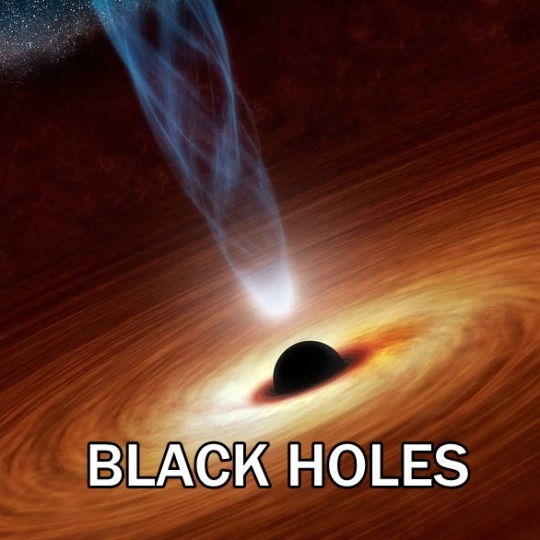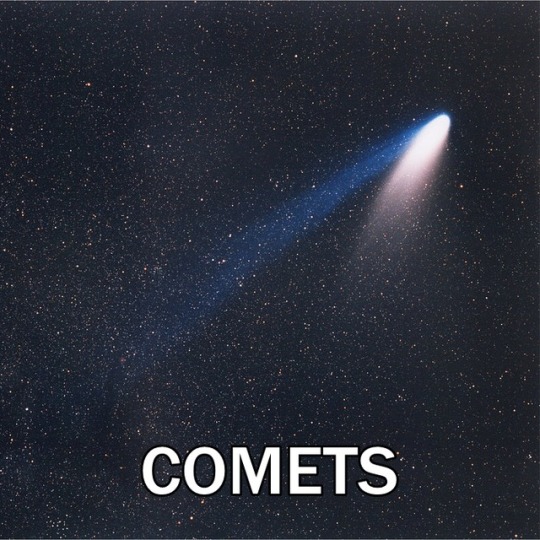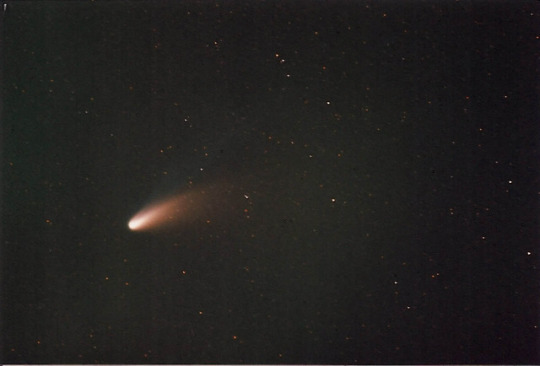Photo




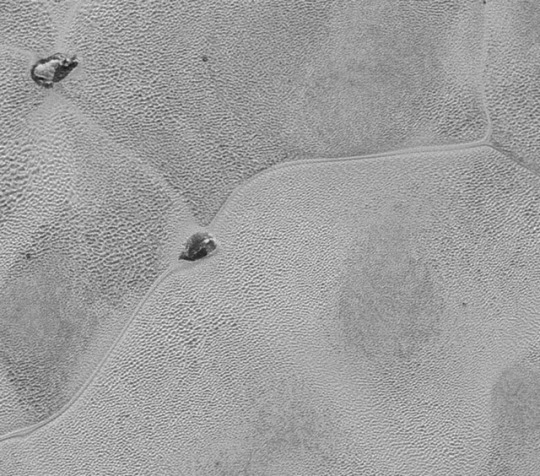

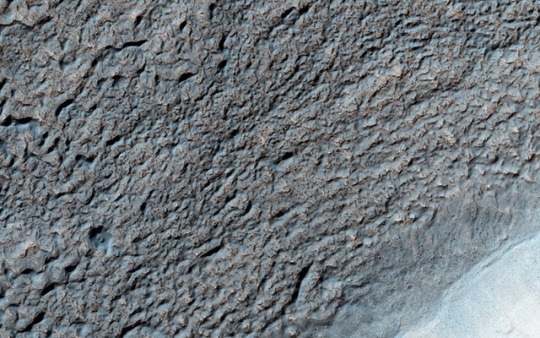

High-resolution images of Pluto taken by NASA’s New Horizons spacecraft.
The plains on Pluto’s surface are composed of more than 98 percent nitrogen ice, with traces of methane and carbon monoxide. Nitrogen and carbon monoxide are most abundant on the anti-Charon face of Pluto (around 180° longitude, where Tombaugh Regio’s western lobe, Sputnik Planitia, is located), whereas methane is most abundant near 300° east. The mountains are made of water ice. Pluto’s surface is quite varied, with large differences in both brightness and color. Pluto is one of the most contrastive bodies in the Solar System, with as much contrast as Saturn’s moon Iapetus. The color varies from charcoal black, to dark orange and white. Pluto’s color is more similar to that of Io with slightly more orange and significantly less red than Mars. Notable geographical features include Tombaugh Regio, or the “Heart” (a large bright area on the side opposite Charon), Cthulhu Macula, or the “Whale” (a large dark area on the trailing hemisphere), and the “Brass Knuckles” (a series of equatorial dark areas on the leading hemisphere). Sputnik Planitia, the western lobe of the “Heart”, is a 1,000 km-wide basin of frozen nitrogen and carbon monoxide ices, divided into polygonal cells, which are interpreted as convection cells that carry floating blocks of water ice crust and sublimation pits towards their margins; there are obvious signs of glacial flows both into and out of the basin. It has no craters that were visible to New Horizons, indicating that its surface is less than 10 million years old.
source | images: NASA/JPL
5K notes
·
View notes
Photo
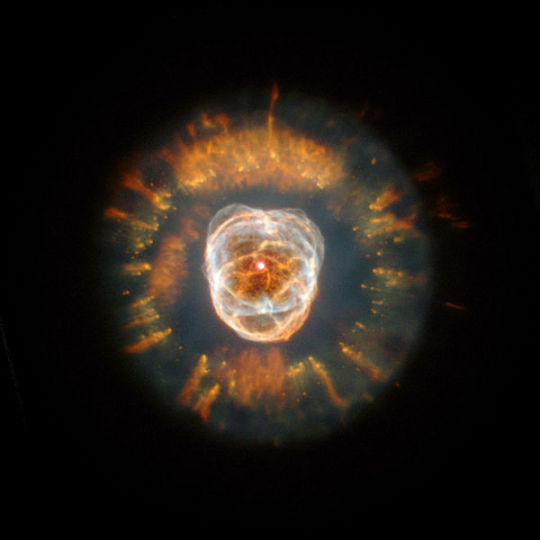
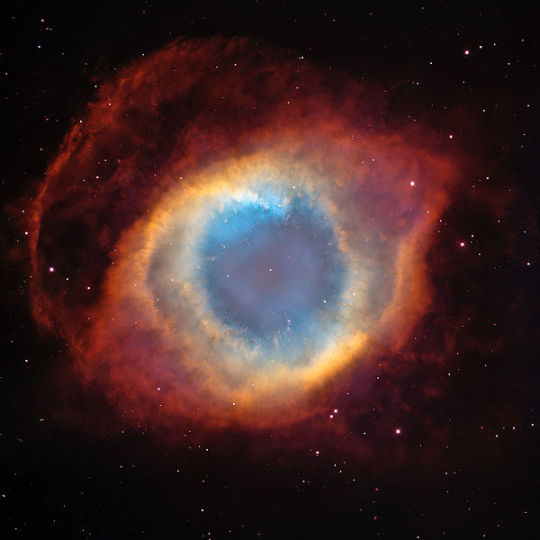

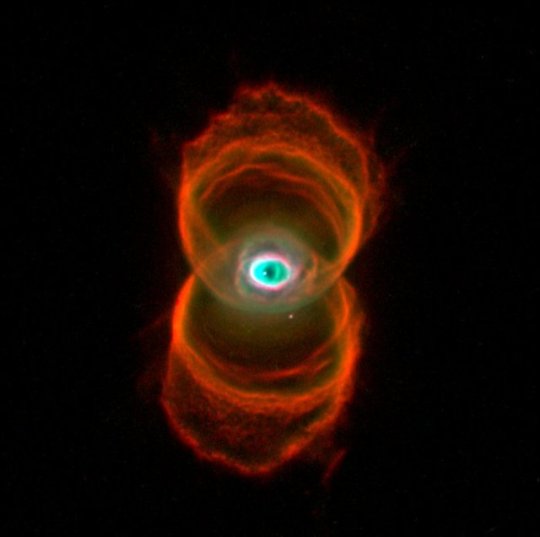



Planetary nebula
A planetary nebula, abbreviated as PN or plural PNe, is a kind of emission nebula consisting of an expanding, glowing shell of ionized gas ejected from red giant stars late in their lives. The word “nebula” is Latin for mist or cloud, and the term “planetary nebula” is a misnomer that originated in the 1780s with astronomer William Herschel because, when viewed through his telescope, these objects resemble the rounded shapes of planets. Herschel’s name for these objects was popularly adopted and has not been changed. They are a relatively short-lived phenomenon, lasting a few tens of thousands of years, compared to a typical stellar lifetime of several billion years.
Most planetary nebulae form at the end of the star’s life, during the red giant phase, when the outer layers of the star are expelled by strong stellar winds. After most of the red giant’s atmosphere is dissipated, the ultraviolet radiation of the hot luminous core, called a planetary nebula nucleus (PNN), ionizes the ejected material. Absorbed ultraviolet light energises the shell of nebulous gas around the central star, causing it to appear as a brightly coloured planetary nebula.
Planetary nebulae likely play a crucial role in the chemical evolution of the Milky Way by expelling elements to the interstellar medium from stars where those elements were created. Planetary nebulae are observed in more distant galaxies, yielding useful information about their chemical abundances.
Stars greater than 8 solar masses (M⊙) will likely end their lives in dramatic supernovae explosions, while planetary nebulae seemingly only occur at the end of the lives of intermediate and low mass stars between 0.8 M⊙ to 8.0 M⊙.
source
images: NASA/ESA, Hubble
6K notes
·
View notes
Photo
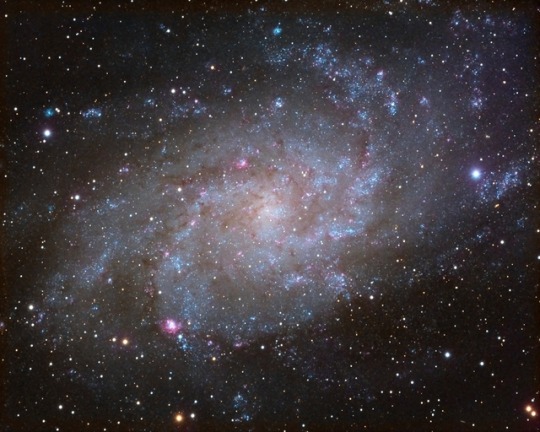
M33: Triangulum Galaxy : The small, northern constellation Triangulum harbors this magnificent face-on spiral galaxy, M33. Its popular names include the Pinwheel Galaxy or just the Triangulum Galaxy. M33 is over 50,000 light-years in diameter, third largest in the Local Group of galaxies after the Andromeda Galaxy (M31), and our own Milky Way. About 3 million light-years from the Milky Way, M33 is itself thought to be a satellite of the Andromeda Galaxy and astronomers in these two galaxies would likely have spectacular views of each other’s grand spiral star systems. As for the view from planet Earth, this sharp composite image nicely shows off M33’s blue star clusters and pinkish star forming regions along the galaxy’s loosely wound spiral arms. In fact, the cavernous NGC 604 is the brightest star forming region, seen here at about the 7 o'clock position from the galaxy center. Like M31, M33’s population of well-measured variable stars have helped make this nearby spiral a cosmic yardstick for establishing the distance scale of the Universe. via NASA
2K notes
·
View notes
Photo


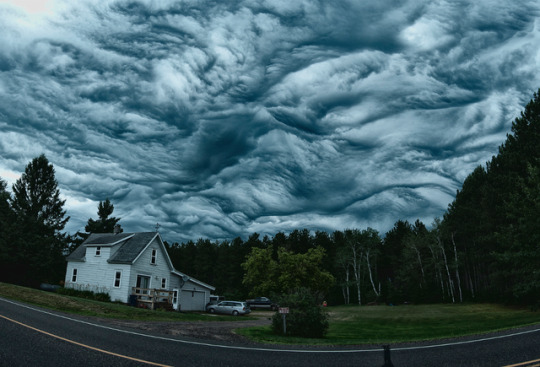
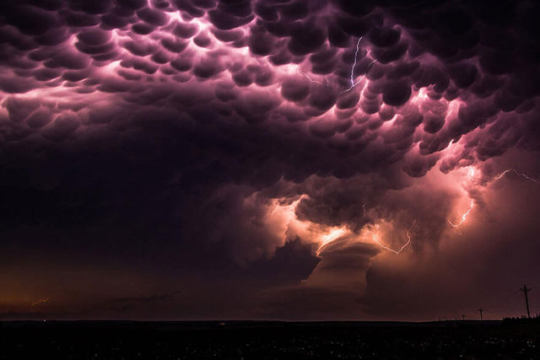
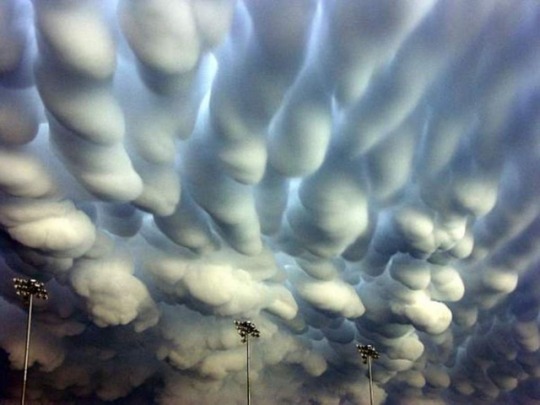
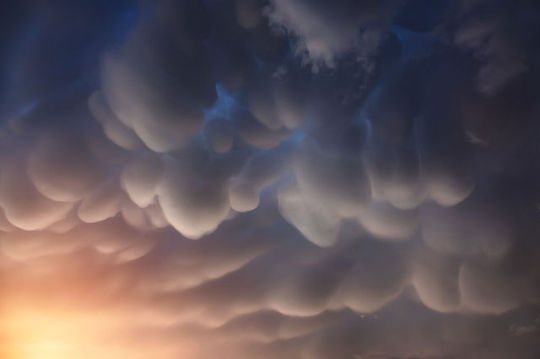

Asperitas and Mammatus
Well-defined, wave-like structures in the underside of the cloud; more chaotic and with less horizontal organization than the variety undulatus. Asperitas is characterized by localized waves in the cloud base, either smooth or dappled with smaller features, sometimes descending into sharp points, as if viewing a roughened sea surface from below. Varying levels of illumination and thickness of the cloud can lead to dramatic visual effects.
Occurs mostly with Stratocumulus and Altocumulus
Mammatus is a cellular pattern of pouches hanging underneath the base of a cloud, typically cumulonimbus rainclouds, although they may be attached to other classes of parent clouds.
source | source | images: x, x, x, x, x, x, x
11K notes
·
View notes
Photo
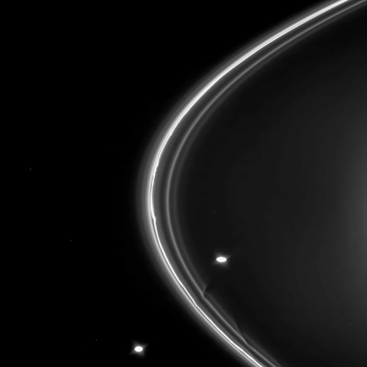
Prometheus and Pandora shepherd Saturn’s F ring into shape
Image credit: Morphics Zero
2K notes
·
View notes
Photo

Global view of Venus from Mariner 10
Image credits Mattias Malmer/NASA/JPL
3K notes
·
View notes
Photo

The auroras on Jupiter’s poles were photographed by Hubble during the New Horizons flyby in 2007.
Credit: NASA/ESA & Hubble
2K notes
·
View notes
Photo

Image of Saturn taken by Cassini spacecraft in October 28, 2016.
Credit: NASA/JPL
12K notes
·
View notes
Photo

Spiral Galaxy NGC 2841
Image Credit: Hubble, Subaru; Composition & Copyright: Roberto Colombari
2K notes
·
View notes








